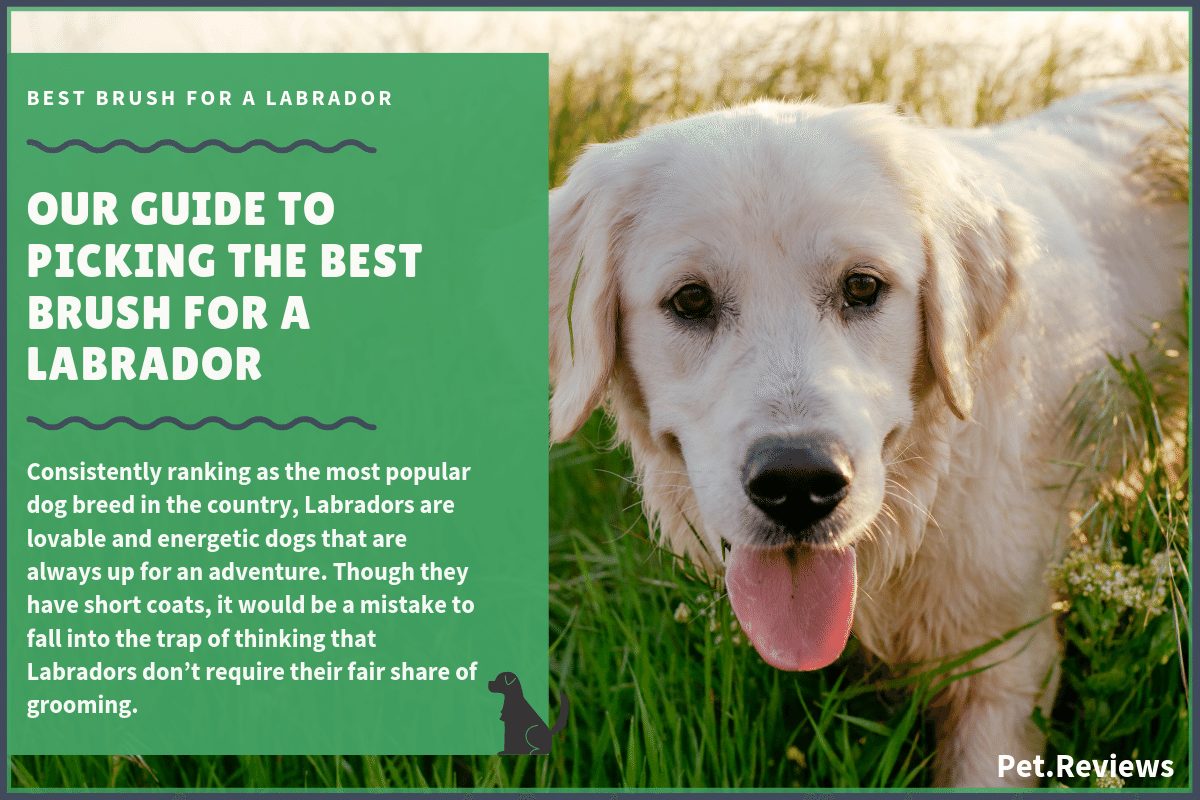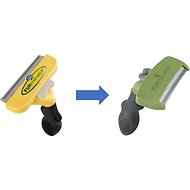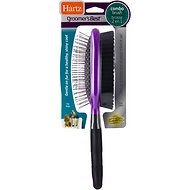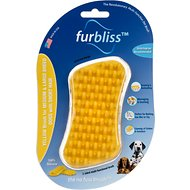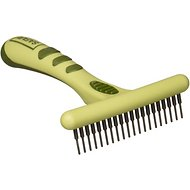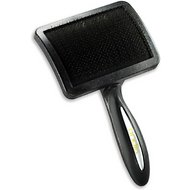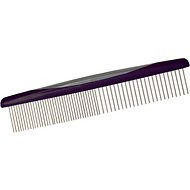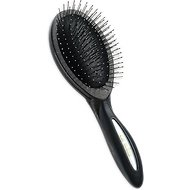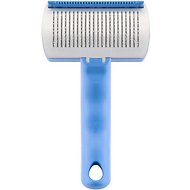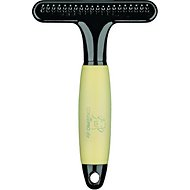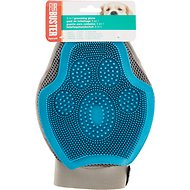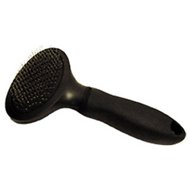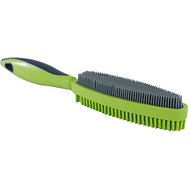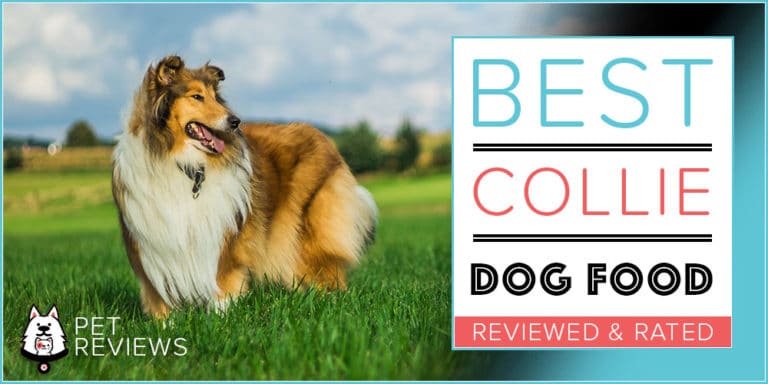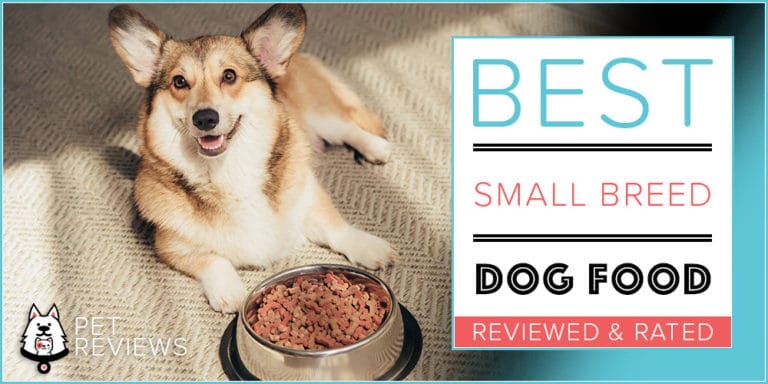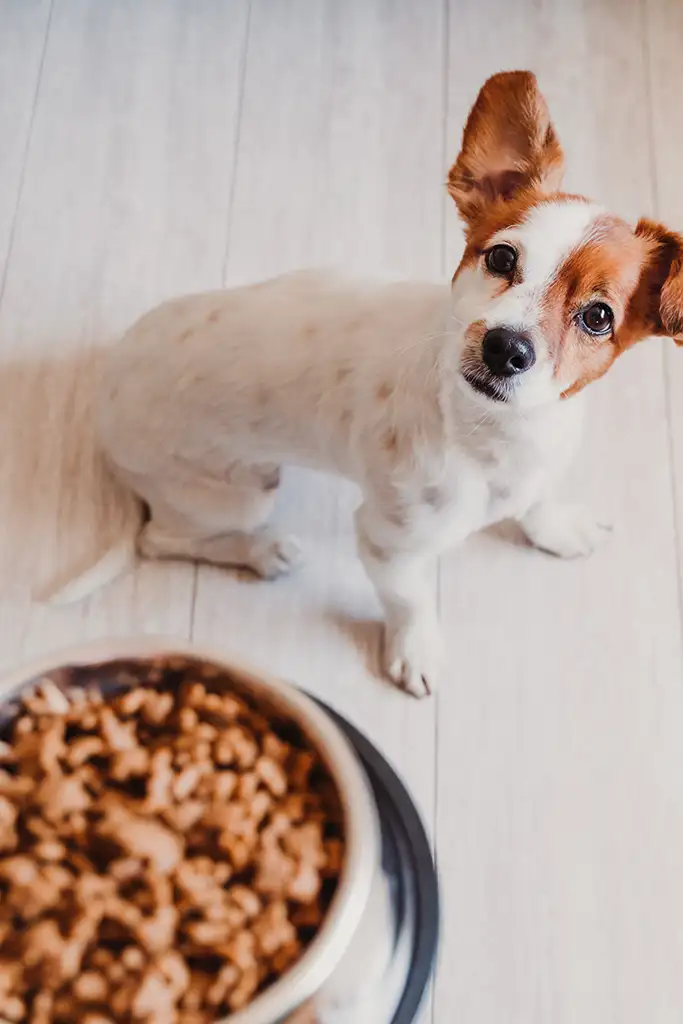Best Brush for Labrador: 10 Best Labrador Brushes in 2024
Quick Guide
- What is the best Brush for a Labrador?
- Different Types of Labrador Brushes
- Different Types of Labrador Coats
- Our Top Picks for Best Brushes for Labradors
- FURminator deShedding Edge Dog Brush
- Hartz Groomer’s Best Combo Dog Brush
- Furbliss Multi-Use Deshedding and Massaging Short Hair Dog Brush
- Safari Single Row Undercoat Rake Dog Grooming Tool
- Andis Premium Large Firm Pet Slicker Brush
- Petmate Furbuster Rotating Tooth Comb for Dogs
- Andis Premium Large Pin Pet Brush
- 5 More Top Rated Labrador Brushes
- 6 Tips for Brushing Your Labrador
- FAQs Regarding Brushes for Labradors
- Conclusion
Consistently ranking as the most popular dog breed in the country, Labradors are lovable and energetic dogs that are always up for an adventure. Though they have short coats, it would be a mistake to fall into the trap of thinking that Labradors don’t require their fair share of grooming.
Due to their Canadian origins, Labradors have a double-layer coat that helps regulate their temperature and protect them from the elements. The top coat is coarser and oilier (which contributes to their swimming abilities and water resistance), while the undercoat is softer and plusher. Labrador coats come in several varieties, but these are their main unifying features.
Twice a year, these dogs “blow” their coats, and Lab owners are in for a mess if they haven’t kept up with regular grooming or don’t anticipate this semi-annual shed. We know that Labs don’t get a lot of attention in the grooming world, so we’ve compiled this guide to help you suss out which brush is best for your Labrador!
We will discuss the different types of Labrador brushes and coats, then offer up a list of some of our favorite brushes for this sweet breed.
What is the best Brush for a Labrador?
- FURminator deShedding Edge Dog Brush – Most Popular
- Hartz Groomer’s Best Combo Dog Brush
- Furbliss Multi-Use Deshedding and Massaging Short Hair Dog Brush
- Safari Single Row Undercoat Rake Dog Grooming Tool
- Andis Premium Large Firm Pet Slicker Brush
- Petmate Furbuster Rotating Tooth Comb for Dogs
- Andis Premium Large Pin Pet Brush
- Pet Zoom Self Cleaning Grooming Brush With Trimmer
- ConairPRO Dog Undercoat Rake
- Petmate FurBuster 3-in-1 Dog Grooming Glove
- Miracle Care Slicker Dog Brush
- FURemover Dual-Sided Grooming and Hair Removal Dog & Cat Brush
Different Types of Labrador Brushes
Are you unsure of what types of brushes even exist for Labs, and really unsure of their features/functions? Don’t worry, that’s not unusual. Here’s a quick list of some different types of brushes commonly used for Labradors, and what exactly they do.
- Shedding Brush — Most of the time, a shedding brush has a comb-like appearance with one or more rows of fine teeth meant to trap loose hair before it scatters around your house. There is also a version of shedding brush made of rubber or silicone with many layers of thicker teeth that is growing in popularity. As you might have guessed, this is an important brush to have on hand for Lab owners.
- Undercoat Rake — Similar to a shedding brush, an undercoat rake utilizes a row of teeth and aims to snag loose or dead parts of the undercoat. Unlike a shedding brush, a rake’s teeth are longer and thicker with more space between each one. Utilizing an undercoat rake for your Labrador before they blow their coat will minimize the amount of fur they shed.
- Slicker Brush — These brushes consist of a square or rectangular head full of fine wire bristles. They serve to remove dirt from the surface of the coat, and help combat mats in more tender areas. This is an especially useful tool if your Lab is a little grimy but doesn’t need an in-depth brushing.
- Pin Brush — A standard human hairbrush looks quite similar to a pin brush. They are a good last step of the grooming process to give a dog’s coat a more uniform look or catch any stray hair that may have been knocked loose.
- Bristle Brush — Bristle brushes are true to their name: they consist of a densely-packed crop of bristles that can be either coarse or soft, and that serve to make a dog’s coat shine. Their brushes are particularly helpful for Labradors, as they stimulate the skin to help it produce the protective oils the Lab coat is famous for.
You may have guessed by now that a well-stocked arsenal of grooming materials for Labs will usually feature more than one type of brush.
Different Types of Labrador Coats
Though there isn’t a lot of variation in Labrador coats when it comes to texture and grooming needs, there are some small differences between the three types of Labs, which we will discuss here.
- Black Labs — Labs with black coats are most frequently chosen as hunting dogs. Whether this is because they are actually superior retrievers or simply because they have earned a reputation as highly trainable is unclear. In any case, the likelihood of dogs with this type of coat spending time out in the elements is higher than that of the other two types, meaning black Labs will more often need extra attention for removing dirt and debris from their coats.
- Yellow Labs — This type of Lab is the most popular choice for a family pet of these three subsets. Their coats are sometimes finer than their black and brown counterparts, and they are more likely to pass their days in the house, so extra attention will be necessary to prevent shedding disasters.
- Chocolate Labs — Chocolate is the recessive coat color for Labs, but because of the color’s popularity, they have been overbred. Labs with this type of coat have been found to experience skin diseases more frequently, which can mean a need for more sensitive and conscientious grooming.
Our Top Picks for Best Brushes for Labradors
You have taken the time to learn a little more about your Lab’s coat and the kinds of brushes that may best suit it, now we’ll reveal our top picks for Labrador brushes in a number of categories!
| Our 2024 Picks: Best Labrador Brushes, Combs and Rakes | |||
FURminator DeShedding Edge Dog Brush
|
CHECK PRICE | ||
Hartz Groomer’s Best Combo Dog Brush
|
CHECK PRICE | ||
Furbliss Multi-Use Deshedding And Massaging Short Hair Dog Brush
|
CHECK PRICE | ||
Safari Single Row Undercoat Rake Dog Grooming Tool
|
CHECK PRICE | ||
Andis Premium Large Firm Pet Slicker Brush
|
CHECK PRICE | ||
Petmate Furbuster Rotating Tooth Comb For Dogs
|
CHECK PRICE | ||
Andis Premium Large Pin Pet Brush
|
CHECK PRICE | ||
Pet Zoom Self Cleaning Grooming Brush With Trimmer
|
CHECK PRICE | ||
ConairPRO Dog Undercoat Rake
|
CHECK PRICE | ||
Petmate FurBuster 3-In-1 Dog Grooming Glove
|
CHECK PRICE | ||
Miracle Care Slicker Dog Brush
|
CHECK PRICE | ||
FURemover Dual-Sided Grooming And Hair Removal Dog & Cat Brush
|
CHECK PRICE | ||
FURminator deShedding Edge Dog Brush
Key Benefits:
- Designed to reach both topcoat and undercoat
- Reduces shedding up to 90% with regular use
- Available in 3 sizes for short or long haired dogs
- Collects fur that can be released with a button
Overall Best Brush for Labradors — This brush could cater to the needs of almost any dog and is particularly well-suited to Labrador coats. The smooth, easy to use design ensures that your Lab won’t hate grooming sessions or feel any discomfort during brushing, and regular use of this tool can reduce shedding by a whopping 90%.
Pros:
- Effective for grooming both layers of a Lab’s coat
- Won’t uncomfortably poke the skin
- Highly effective at reducing shedding
Cons:
- Teeth may be too short to get through thicker winter coats
- The hair release button can stick
Hartz Groomer’s Best Combo Dog Brush
Key Benefits:
- Dual-sided brush head for versatile use
- Nylon bristles help evenly distribute Labradors’ natural coat oils
- Safety-tipped steel pins loosen and collect extra fur
- Costs less than $7
Best Shedding Brush for Labradors — With its dual sides, this brush kills two birds with one stone. The pin side of the brush will effectively remove excess fur from your dog’s coat, and the bristle side will smooth it while evenly distributing its natural oils.
Pros:
- Versatile dual-sided head
- Very cost effective
- Work with Labs’ coats rather than against them
Cons:
- Pin side is weak against coarse coats
- Bristles are quite stiff until broken in
Furbliss Multi-Use Deshedding and Massaging Short Hair Dog Brush
Key Benefits:
- Made of silicone to attract fur
- Rounded spikes trap fur
- Can be used on wet or dry fur
- Helps stimulate the production of a Lab’s natural oils
Best Deshedding Tool for Labradors —This tool exemplifies a new wave of grooming accessories that don’t look or act like any we have seen before. You simply hold this silicone pad in your hand and gently massage your dog—the tool does the rest! The silicone bristles will trap your Lab’s wet or dry fur so it doesn’t wind up on your floor, furniture, or clothing later on.
Pros:
- Comfortable experience for your dog
- Very effective at reducing shedding
- Targets dander and sebum in addition to fur
Cons:
- Hair can be hard to remove from the tool
- Difficult to hold on to
Safari Single Row Undercoat Rake Dog Grooming Tool
Key Benefits:
- Tapered pins designed to reach the undercoat
- Will work through mats and tangles as well as loose fur
- Promotes softness while reducing shedding
- Pins are rounded to eliminate discomfort
Best Undercoat Rake for Labradors — An undercoat rake is an invaluable tool for heavy shedding dogs like Labradors, and this is an especially high-quality rake. It works by targeting the layer of fur below your dog’s coarse, oily topcoat to pull out the loose hair that contributes most heavily to shedding. While this brush will certainly reduce shedding, later on, it doesn’t do a great job of holding onto the fur you brush out, so you will likely have some clean up to do after grooming.
Pros:
- Tapered pins specifically designed to target undercoat
- Greatly reduces shedding
- Does not cause your dog discomfort
Cons:
- Not effective for cleaning fur
- Will not trap short hair in its pins
Andis Premium Large Firm Pet Slicker Brush
Key Benefits:
- Fine wire bristles
- Takes aim at dirt hiding in the coat
- Targets both layers of fur
- Prevents matting
Best Slicker Brush for Labradors —This slicker brush does just what it’s meant to, and at a very affordable price. The wire bristles are perfect for separating dirt and debris from your Lab’s coarse coat. This adventurous breed is bound to pick up some muck during their days, and this brush is great for ensuring it doesn’t follow them back into your home.
Pros:
- Easily removes dirt
- Fine wires won’t irritate your dog’s skin
- Does not require much pressure
Cons:
- Can break with prolonged use
- Not as effective at targeting undercoat
Petmate Furbuster Rotating Tooth Comb for Dogs
Key Benefits:
- Stainless Steel so you can be certain it is durable
- Rotating teeth to minimize strain or discomfort
- Good for removing small debris from fur
- An effective final grooming step
Best Comb for Labradors —Your Labrador isn’t likely to need a comb often, but if you want to really make sure that their coat is as clean as possible, this one is a great choice to round out your grooming process.
Pros:
- Simple, sturdy design
- Rotating teeth maximize comfort
- Ensures no debris is left behind
Cons:
- Not the most useful tool for a Lab’s short coat
- Rotating teeth feel flimsy to some
Andis Premium Large Pin Pet Brush
Key Benefits:
- Effective at removing tangles, dirt, and loose hair
- Tipped pinhead bristles ensure pet comfort
- Stimulates skin for healthy blood flow
- Costs less than $9
Best Pin Brush for Labradors — This is a classic brush, perfect for dogs who don’t spend a ton of time outside and who are groomed with other brushes to prevent shedding. It is ideal for the end of a grooming session, to gently massage away any loose hair that has been left behind.
Pros:
- Versatile brush with a classic design
- Comfortable for your Lab
- Cost-effective
Cons:
- Not the best shedding prevention
- Tips may come off of pins
5 More Top Rated Labrador Brushes
Pet Zoom Self Cleaning Grooming Brush With Trimmer
Key Benefits:
- Attracts dirt and dander as well as loose fur
- Adjustable bristle length
- Equipped with trimmer attachment for knots
- Designed for easy cleaning
There are many reasons to love this pin brush from Pet Zoom. It is designed to remove dirt and dander in addition to loose fur, and it can be cleaned in a snap. You won’t likely need the trimmer tool for your lab’s short coat, but it’s always good to be prepared.
Pros:
- Versatile uses
- Adjustable bristle length
- Gentle on your dog’s skin
Cons:
- The plastic is not very sturdy
- Bristles may come loose
ConairPRO Dog Undercoat Rake
Key Benefits:
- Spaced-out stainless steel pins target undercoat
- Effective at removing things like burs from your Lab’s fur
- Thinner undercoat reduces shedding mess
- Costs less than $10
Another great undercoat rake, this brush will leave your dog’s coat free of any sharp vestiges of earlier outdoor playtime as well as excess undercoat fur. This brush is a steal at under $10.
Pros:
- Great for minimizing the famous Labrador shedding
- Stainless steel means solid construction
- Offers a model specifically for short haired pets
Cons:
- Fur may stick to the gel handle
- Rake design will not hang on to short hair
Petmate FurBuster 3-in-1 Dog Grooming Glove
Key Benefits:
- Grooming glove with inner straps to ensure a good fit
- Will work on either wet or dry fur
- Small rubber brushes on the palm side snag loose hair
- Allows you to massage your dog as you groom
This ‘brush’ couldn’t be any easier to use. You simply slip on the glove with the rubber side over your palm, adjust the straps so it fits your hand correctly, and massage your dog. The loose fur will get trapped in the thick rubber bristles and your Labrador won’t even realize it’s being groomed.
Pros:
- Can work for wet or dry fur
- Gentle even for Labs with sensitive skin
- Easy to use
Cons:
- More effective for long-haired dogs
- The glove can fill up with hair quickly
Miracle Care Slicker Dog Brush
Key Benefits:
- Gently detangles fur and prevents mats
- Angled pins help reach the undercoat
- Painless for dogs
- Great at trapping dead hair
No set of grooming supplies is complete without a slicker brush, and this one is a great option. It is recommended by 100% of reviewers, and it certain to keep your Lab’s coat smooth and dirt free.
Pros:
- Fine teeth trap undercoat
- Won’t hurt your Labrador during grooming
- Very affordable
Cons:
- Maybe better suited for long-haired dogs
- Owners have to be conscious of how they hold the brush due to angled bristles
FURemover Dual-Sided Grooming and Hair Removal Dog & Cat Brush
Key Benefits:
- Thick rubber bristles loosen and trap fur
- Can also be used to remove dog fur from other surfaces
- The rubber material feels comfortable for your Labrador
- Easily retrieve hair from thick bristle side
Another rubber brush, this one is structured more traditionally. The thick bristles on one side are meant to loosen and trap your dog’s fur as you brush; the thin bristles on the other side are intended to remove fur from your home’s surfaces.
Pros:
- Your Lab will enjoy grooming sessions with this brush
- Helps minimize shedding if used regularly
- Makes cleaning fur in the home simpler
Cons:
- Will not reach the undercoat
- Not meant to reduce any tangling or remove debris
6 Tips for Brushing Your Labrador
Now that you have all the information you need to choose a brush, let’s talk about some useful tricks to employ when brushing your Lab.
- Incentivize — Give your Lab a reason to want to be brushed. This could mean something as simple as buying a treat that you give them specifically at grooming time. A small gesture like this on your part will help ease them into being brushed, and over time they will associate brushing with the incentive.
- Reward them after brushing — Signal to your Labrador that being brushed is a good thing by following up every brushing session with something they love to offer positive reinforcement. Even a few minutes of play time with you or a new bone would do the trick. Positive reinforcement is the most effective method for any aspect of dog training, and you may eventually find that your dog welcomes a good brushing because they know what’s coming next.
- Focus on the undercoat — If you’re strapped for time, focus your grooming sessions on your Lab’s undercoat. This is where the majority of shed hair comes from, so if you tend to it regularly, your future self will thank you. A few minutes a week with your Lab and an undercoat rake will allow you to drastically reduce the shedding you see later in the year.
- Choose a comforting brush — Incentives and rewards won’t be enough to make your dog look past a painful brush. They will begin to fear and avoid grooming at all costs if they have a negative experience, so look for a brush that offers a high degree of comfort from the start. If grooming is a neutral or even comfortable experience for your Labrador, you’ll have a much easier time getting the job done.
- Brush your Lab regularly — No matter which brush you choose, it won’t do you any good unless you use it. It may feel cumbersome, but taking a few moments to brush your dog every week will pay off tenfold when it comes time for your Lab to blow its coat.
- Use multiple brushes — If you have the time, use a few different brushes that are excellent at their specialized function to groom your Lab. This will ensure that you have future shedding under control, that their coat is clean, and that there are no tangles or burs lurking in that fur.
FAQs Regarding Brushes for Labradors
As we mentioned before, the idea of having to groom a Labrador can feel foreign to new owners. That’s why we have taken the time to answer some of the common FAQs on the subject.
- Do I need to brush my Labrador? Yes. Labs have double coats, which they shed twice a year. Your lab may not look like the type of dog that’s going to cover everything you own in fur, but it will if you don’t spend some time grooming.
- What kind of brush is best for a Lab? It depends on what you want to accomplish with brushing. Is your main goal to control shedding? A shedding brush or undercoat rake is likely the best choice. Are you more concerned about dirt and debris in your dog’s fur? A slicker brush may serve you well.
- Do Labradors shed? Yes—and a lot, at that! Don’t let those short coats fool you, Labs are major shedders. Proper grooming throughout the year will help mitigate this, though. If shedding is a concern for you, consider a purchasing shedding brush or an undercoat rake.
- How often should I groom my Lab? If you can find a few minutes once a week to brush your Labrador, you should be in good shape. Bathe your Lab as little as possible, as soap will destroy the natural oils in their topcoat.
Conclusion
It’s no secret that Labradors are great pets. Their loving attitudes and contagious energy brighten up every family they’re a part of, but their fur can become burdensome if it isn’t properly tended to. That’s why it’s so important that these sweet furry friends are brushed regularly, with an appropriate brush for the breed.
We hope this guide has opened up your eyes to the world of Labrador brushes and given you an idea of where to start when choosing one. Now pick out a brush for your Lab, and watch how much easier it makes your life!

